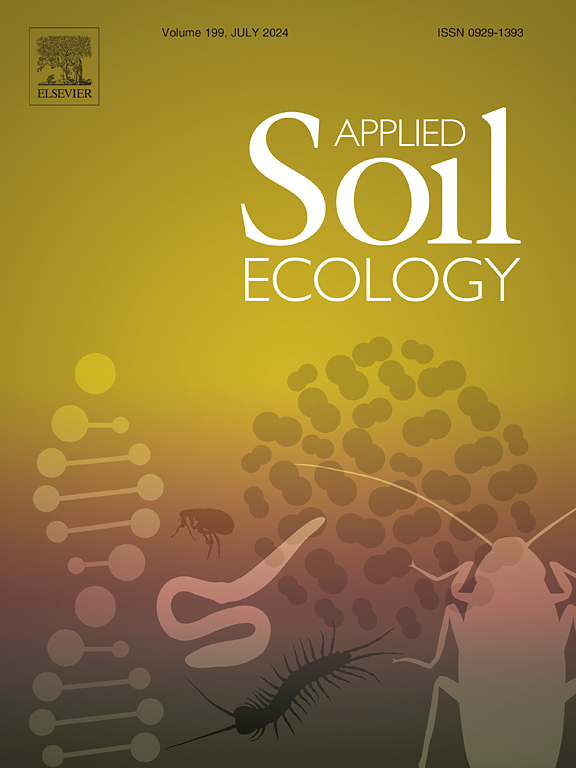Shrub effect in semiarid Monte rangelands: Variation of arbuscular mycorrhizal fungi communities associated with different functional groups of plants
IF 4.8
2区 农林科学
Q1 SOIL SCIENCE
引用次数: 0
Abstract
The presence of shrubs in semiarid rangelands has been associated with changes in the spatial distribution of soil resources. However, the relationships between woody species and arbuscular mycorrhizal fungi (AMF) remain unclear. This study investigated the influence of shrub cover on AMF communities and their associations with soil quality indicators. In spring 2017, five paddocks were selected in a semiarid Monte rangeland of Argentina. Two 10-m transects were established in each paddock: one in a shrub-dominated patch (Sh) and one in a shrub-free patch (WSh). Within each transect, sampling sites were categorized as grass-covered (Sh-G and WSh-G), bare ground-litter (Sh-BL and WSh-BL), or under shrubs (Sh-S). Composite soil samples (5 cores per site, 0–10 cm in depth) were collected within each site for AMF spore extraction and identification. Entrophosporaceae abundance was higher in Sh-BL than Sh-G and Sh-S sites. Glomeraceae abundance was lower in Sh-G and Sh-BL than in the same sites in WSh transects. Ruderal/rhizophilic AMF presented higher abundance in WSh-BL than in Sh-S and Sh-BL sites, while stress tolerant/ancestral AMF were more abundant in Sh-G than in WSh-G sites. Soil organic matter, its labile fraction, and cellulase activity correlated positively with the abundance of Ambisporaceae and Pacisporaceae, but negatively with Entrophosporaceae. These results indicate that shrub species tend to favor the presence of stress tolerant/ancestral AMF over more generalist or ruderal/rhizophilic types commonly found in the soil nearby. These effects may be driven by increased organic fractions and microbial activity associated with the soil carbon cycle.
求助全文
约1分钟内获得全文
求助全文
来源期刊

Applied Soil Ecology
农林科学-土壤科学
CiteScore
9.70
自引率
4.20%
发文量
363
审稿时长
5.3 months
期刊介绍:
Applied Soil Ecology addresses the role of soil organisms and their interactions in relation to: sustainability and productivity, nutrient cycling and other soil processes, the maintenance of soil functions, the impact of human activities on soil ecosystems and bio(techno)logical control of soil-inhabiting pests, diseases and weeds.
 求助内容:
求助内容: 应助结果提醒方式:
应助结果提醒方式:


